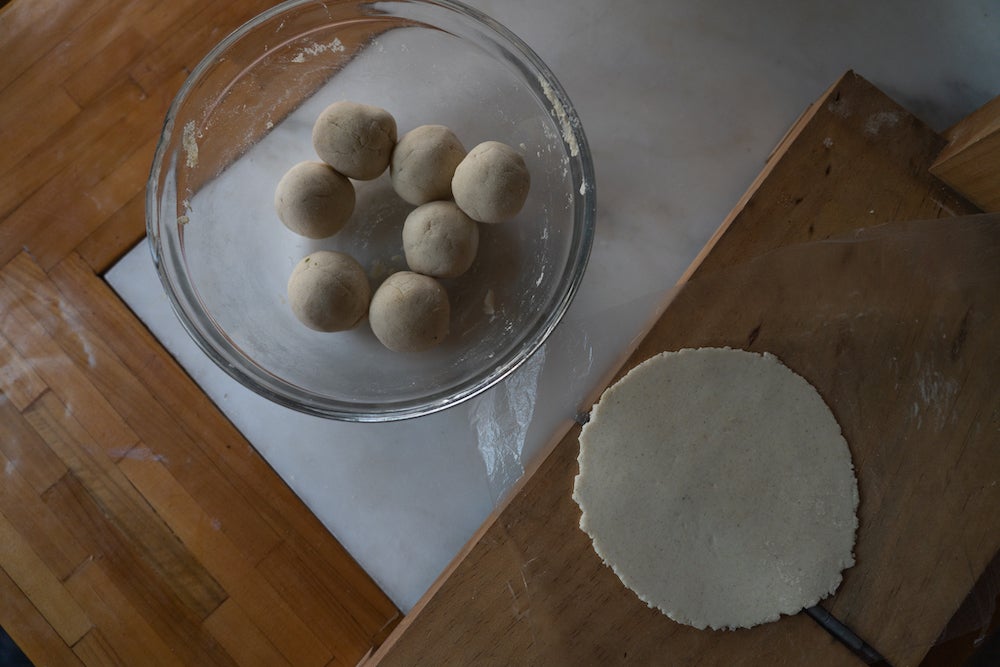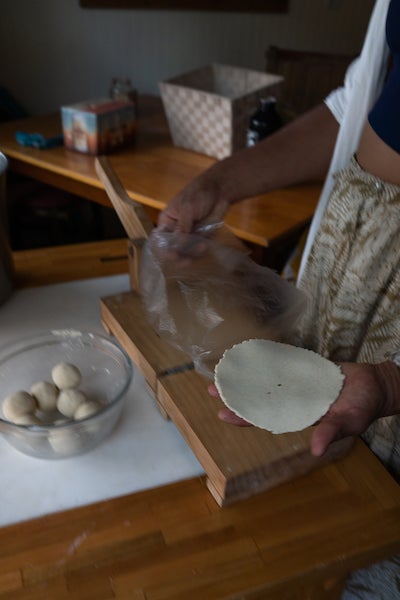Corn Tortillas / Tortillas de Maíz
Dani Reyes-Acosta shares her family’s special (and simple!) recipe for making your own corn tortillas. Dani’s story is featured in The Backyard Stories, in partnership with Protect Our Winters.
New perk! Get after it with local recommendations just for you. Discover nearby events, routes out your door, and hidden gems when you sign up for the Local Running Drop.
You can read and listen to Dani Reyes-Acosta’s full Backyard Stories feature here.
What are The Three Sisters?
The Three Sisters share space in the garden to connect the Earth to the Sky, allowing humans to act as cultivator, steward, and maybe even friend. The Sisters—maize (popularized as corn by the agro-industrial complex), beans, and squash—grow together in community and symbiosis, creating a unique cultural, spiritual, and productivity environment.
Why is this important for you to explore in your own garden?
As I learn more about my cultural heritage each year, I’ve learned how important it is to embrace the wholeness of who I am as both an athlete and individual that strives to live in communion and harmony with Nature and fellow beings.
As I come to understand more of what it means to be American—and how the agro-industrial complex affects community health as much as livelihoods—I’ve also come to understand that turning towards my own backyard, and what I invest in it, can bring tremendous benefits to me and those I love.
A big part of this includes developing a rooted relationship to the land, which in turn gives me the tools to understand where I fit in this puzzle. Respect for how living things grow together and support each other has taught me countless lessons about how I can live my life—and how I can show up for others, in community.
How are corn tortillas meaningful to you and your family?
As a Mexican and Filipina woman, tortillas have always been a part of my life, as much as my heritage. They are the basis of so many of the foods I’ve grown up with, including tacos, enchiladas, chips, and more. But tamales, made with a coarser corn grind (masa quebrada) than masa tortillas use, are what first brought the significance of corn into my life.
Tortillas opened the door to show me a path.
Corn, the mother of all, has allowed me to reconnect with my Mesoamerican roots and the ancestors I’ve lost. She’s been a friend and inspiration to gather others in community, to create more balance, to share deeply, and to always reach towards the sky.
The Recipe
Tortillas are the basis of any good Mexican meal, and making them yourself is a fun (mostly easy) process. If you can learn to make this recipe, the possibilities are endless: chips, enchiladas, and even dessert can be in your future.
We used to make tamales every Christmas as a family, and my Nana, Gertrude, never used a measuring cup. While I have shared measurements here, remember that the trial-and-error can be your friend here. It’s almost impossible to mess up tortillas: if something doesn’t seem right, just balance out the recipe with one of the two main ingredients!
I’ve shared this recipe, Nana-style, with you, which means that you might have to do a little guessing and paying attention to your intuition. (I’ll leave out the back-of-the-arm pinches, though, because that Nana special is probably left remembered.)
If making tortillas is too much work for you, and you’re really here to just integrate more delicious, non-GMO, Indigenous-grown corn into your life, I HIGHLY recommend adding pinole from Ramona Farms into your next trail run. This Native superfood has powered every single desert and mountain run I’ve done this year, and I can’t recommend it enough as a nutrition and good Earth choice. Find corn pinole from Ramona farms here.
No matter how you choose to bring corn into your life, I hope it brings you as much joy as it does for me.
Ingredients
- 2 cups of masa harina (can be found in any Latino or Mexican grocery store or food section)
- 1 ¼ cups of warm water
- Pinch of finely ground salt
Additional items
- Traditional comal (or cast iron)
- 1 plastic bag, sliced along the seams
- Tortilla press
- Two clean kitchen towels
- Tortilla warmer
Preparation
- Warm the water so that it’s not quite hot, but not quite cold. It should be pleasantly warm, like something you’d feed a kitten.
- Add your masa harina to a big mixing bowl. Sprinkle in your pinch of salt, and mix with a wooden spoon.
- Add the warm water to the masa mix just a little bit at a time. The masa will absorb the water as you mix with your hands. Add more water, then knead a bit more.
- Repeat this process until the water has absorbed evenly, and the dough forms a ball. The dough shouldn’t be wet or sticky, nor should it be dry and crumbly. Try to make little balls with the dough; if it crumbles, you still need more water in the mix. Once you can make a nice ball that can be spread between your palms, you’re ready to make tortillas!

- Since you’re thinking ahead, prepare your dough balls from all the dough you’ve made. Shape dough into golf ball-sized balls–this will create the “standard” taco sized tortilla. Less dough makes smaller tortillas. More dough makes bigger (or thicker) tortillas.
- Moisten a clean kitchen towel, and lay it over the top of the bowl. This will prevent the dough from drying out.
- Preheat the comal or cast iron to a medium flame, and let it warm (so that heat can distribute itself evenly) for several minutes. Do not add oil to the pan, even if you have to fight the internal voice telling you to do so.
- Using a tortilla press, place a ball of the dough between the two plastic pieces and press a 6-inch round tortilla.

- Remove the plastic, with tortilla still inside, and unpeel the top layer of plastic. Flop the tortilla into your waiting hand. Then flip the tortilla onto the warm and waiting comal/pan.
- Wait 45 seconds to cook, then flip the tortilla over using either your fingers or a metal spatula. You will get extra points from your Mexican friends if you use your fingers. The edges will begin to dry out. Turn over and continue to cook for 1 minute until brown patches form.
- Store cooked tortillas in a clean towel inside of a tortilla warmer.
- Carry on pressing and cooking tortillas until all your dough balls are gone. If you have too many tortillas to eat, save them for chilaquiles tomorrow!